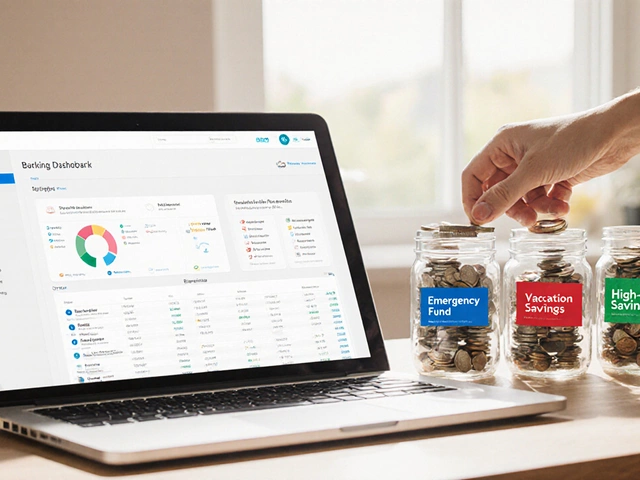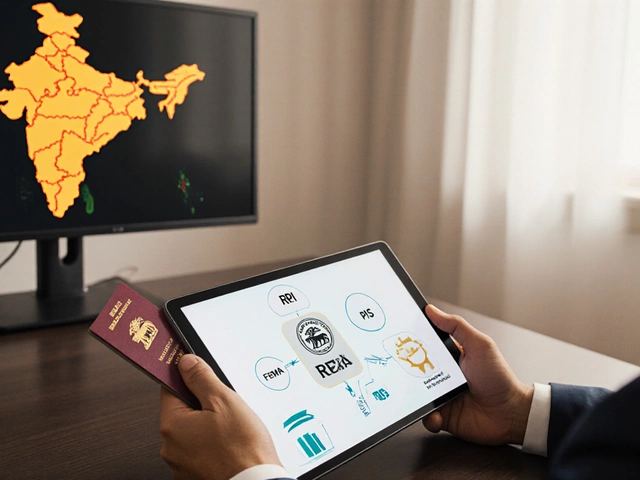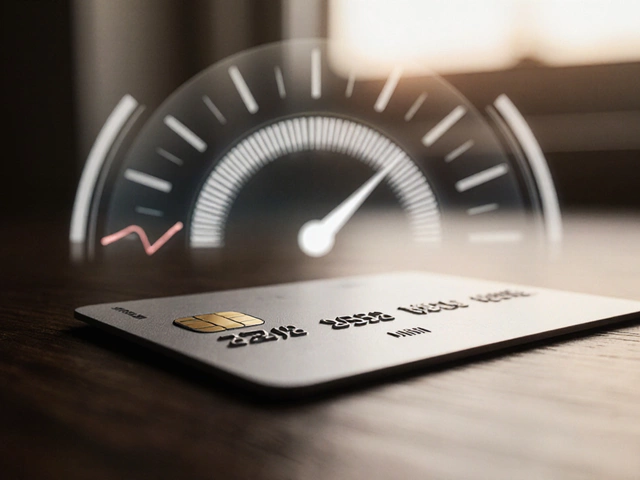
In today's digital age, the convenience of online payments is undeniable, especially in a burgeoning financial market like India. With a plethora of options at our fingertips, selecting the right payment method ensures not just ease but also security in transactions. From traditional banking options to the rise of digital wallets, understanding the safest ways to manage your money online is more relevant than ever.
This guide will dive into the various online payment methods prevalent in India, identifying which ones prioritize safety and security. Whether you are new to digital transactions or a seasoned user, knowing how to shield your financial data is vital. Join me in exploring the ins and outs of online payments, equipping yourself with the knowledge needed to securely navigate the financial web.
- Understanding the Online Payment Landscape
- Popular Payment Methods in India
- Security Features to Look For
- Tips for Safe Online Transactions
- Future of Online Payments in India
Understanding the Online Payment Landscape
The financial sector in India has undergone a significant transformation with the advent of digital payments. The shift from cash-based transactions to digital payment methods is not just a trend but an essential development in the way people handle their finances. With secure transactions becoming a focal point, the need for efficient and safe online payment systems has never been more crucial. In India, a rapidly growing economy with millions of transactions happening daily, understanding the available online payment options is key to a successful and risk-free financial experience.
The Reserve Bank of India (RBI) has been proactive in promoting a variety of digital payment methods to accommodate the diverse needs of India’s population. These methods include mobile wallets, net banking, Unified Payments Interface (UPI), and card-based payments, each offering distinct advantages. As of 2023, UPI has emerged as the primary choice for many due to its seamless integration and user-friendly interface. UPI transactions crossed two billion in a single month, demonstrating its immense popularity and trust among users.
Mobile wallets like Paytm, PhonePe, and Google Pay have gained considerable traction thanks to their ease of use and widespread acceptance. These platforms offer a secure environment backed by multiple layers of online payment authentication, ensuring that both the sender and receiver are protected from potential fraudulent activities. As the digital payment ecosystem grows, service providers are constantly innovating, offering better interfaces and enhanced security features to keep users engaged and loyal.
Security remains a top priority, and the introduction of tokenization, encryption, biometric authentication, and two-factor authentication has added layers of protection to these platforms. The RBI and other regulatory bodies regularly update guidelines to ensure compliance and protect consumers. A well-defined framework, combined with innovative solutions, has paved the way for a robust digital payment infrastructure that prioritizes secure transactions. To quote from a recent report by KPMG:
"The digital payment revolution in India is not just a phase but a permanent shift in how financial transactions will occur in the future."
As India embraces this digital transformation, consumers must remain informed about their options and ensure they choose platforms that align with their financial habits and security expectations. The landscape is vast and continues to evolve at a rapid pace, making it imperative for users to stay updated with the latest developments. From understanding the nuances of each payment method to knowing how to safeguard personal data, being educated in this digital era translates to smarter and safer financial decisions.
The online payment landscape in India is a testament to how technology can elevate everyday experiences, offering convenience, speed, and reliability. As the financial ecosystem continues to evolve, driven by innovation and regulatory support, businesses and individuals alike have the opportunity to benefit from the digital revolution. Embracing these changes ensures not just participation in the modern economy but also a chance to lead in this new digital age.
Popular Payment Methods in India
In recent years, India has witnessed a remarkable transformation in its financial ecosystem, with digital payments becoming an integral part of daily life. Among the wide array of online payment solutions available, there are a few key players that have gained immense popularity owing to their ease of use, security, and reliability. One of the foremost methods is UPI (Unified Payments Interface), a real-time payment system developed by the National Payments Corporation of India. Launched in 2016, UPI has revolutionized how people transact, allowing users to link multiple bank accounts into a single mobile application, merging several banking features seamlessly.
Paytm, another prominent player, started as a mobile recharge platform and has evolved into a full-fledged digital banking ecosystem. Since its inception, the platform has amassed millions of users by offering services ranging from utility bill payments to investment opportunities. Another noteworthy mention is Google Pay, which combines Google's user-friendly interface with robust security protocols, thus gaining vast acceptance amongst Indian users. It's also important to not forget about PhonePe, an early adopter of UPI, which quickly ascended the ranks to join the top league of online payment services.
To dive deeper into the specifics, Paytm Wallet, standing out within the digital-wallet crowd, provides a secure way of transferring money without the hassle of entering bank details repeatedly. This is particularly appealing to the demographic that seeks convenience alongside safety. Further adding to their prowess, advances in soft POS solutions have made it possible for smaller businesses to jump on the digital bandwagon, democratizing access to modern digital banking for vendors of all sizes. According to the Reserve Bank of India, the volume of digital transactions has been projected to reach unprecedented numbers, serving as a testament to the country's move towards a digital-first economy.
"Given the simplicity of UPI, it is no surprise that India leads the world in real-time digital payments," said Harshil Mathur, CEO of a leading financial tech platform.
Statistics indicate that UPI transactions crossed the 25 billion mark in a single quarter, showcasing its acceptance across all strata of society. In a bid to further capture the consumer market, digital payment platforms constantly innovate by introducing tools like rewards and cashback offers, enticing users to stick to digital transactions over cash. Interestingly, the pandemic served as an inadvertent catalyst for this uptick, as businesses and consumers alike began favoring contactless payments. Alongside mainstream platforms, niche offerings like Razorpay and CCAvenue provide businesses with tailored banking solutions, further illustrating the diversity in India's digital payment sector.

Security Features to Look For
As the popularity of online payment methods continues to grow in India, maintaining secure transactions becomes vital for users across the spectrum. Users should be vigilant and attentive to specific security features that these digital platforms provide. First and foremost, encryption is a critical element to consider. It ensures that the information exchanged between your browser and the server is safe from prying eyes. Strong encryption protocols, such as TLS (Transport Layer Security), are imperative. They effectively create a secure tunnel for data, making it nearly impossible for unauthorized parties to gain access. Understanding encryption protocols isn't complicated, and most platforms nowadays display a padlock symbol in the address bar of your browser to reassure users of their encrypted status.
Another key aspect is Two-Factor Authentication (2FA). It adds an additional layer of security, asking the user to confirm their identity through a second method, typically a code sent to a registered mobile device. It reduces the dependency on passwords alone and limits the potential for fraud. Imagine someone knows your password but doesn't have access to your phone – this feature is what protects you in such scenarios. Cogitating over experiences from digital security experts, it has been noted, "Two-Factor Authentication is not just an additional step; it's a necessary precaution for today's digital environment." Implementing 2FA should be one of the first things users enable when setting up any digital banking or payment platform accounts.
Phishing protection is another essential feature. Alert platforms flag suspicious activities and links, shielding users from attempts to steal information. These platforms have mechanisms that constantly evolve to recognize and neutralize new phishing strategies effectively. Always be cautious of solicitations in emails and messages requesting personal details. Recognizing and distinguishing legitimate communication from scams is crucial in protecting oneself from phishing attempts.
Transaction alerts and activity monitoring form a safety net to promptly detect any unauthorized transactions. Platforms often allow users to configure notifications for each transaction. Real-time notifications let users act quickly if something appears amiss. The beauty of technology is that these alerts can make users aware within seconds, ensuring swift action can be taken. Beyond just transactional alerts, activity monitoring in the background provides added assurance your account is secure. It's imperative always to review any notification as soon as it appears to ensure all transactions are authorized.
Additionally, selecting platforms that are regulated and comply with standard industry practices offers peace of mind. Familiarity with the PCI-DSS (Payment Card Industry Data Security Standard) regulation highlights a platform's commitment to safeguarding data. Always verify that a payment method follows industry guidelines, maintaining stringent processes to manage transactions securely. Through trusted platforms, users access technology designed specifically to protect.
These features collectively work towards creating a resilient defense line against potential threats, ensuring that the digital realm remains as secure as possible for its users. In the sphere of digital banking, being complacent isn't an option. As technology advances, so do the threats, and keeping abreast of these security features can be an effective deterrent against them. Next time you set up or use a new payment method, take a moment to explore and enable these features. The seconds it takes to secure your transactions can save heaps of trouble later on.
Tips for Safe Online Transactions
In the fast-paced world of digital payments, ensuring the security of your online transactions has become more crucial than ever. As the adoption of online payment methods in India rises, so does the sophistication of cyber threats. It's essential for consumers to be vigilant and take proactive steps to protect themselves. One of the basic yet effective ways is to always use a secure connection. Accessing banking websites over public Wi-Fi can expose your financial data to hackers lurking in the shadows of insecure networks. It's best to conduct transactions over a trusted network, such as your home internet, ensuring your router has a strong password too.
Cybersecurity experts often advocate for two-factor authentication (2FA) wherever possible. This additional layer of security means that even if a password is compromised, unauthorized access can be prevented with a secondary verification method, such as a text or email code. This can be particularly reassuring when managing digital wallets or online banking accounts. Another prudent step is to regularly update passwords and ensure they are strong – opting for long combinations of letters, numbers, and special characters. A password manager may help in managing these codes efficiently without risking your privacy.
Beware of Phishing Scams
Phishing scams are increasingly prevalent, targeting unsuspecting users with fraudulent emails masquerading as legitimate banking or government communications. These emails often have a sense of urgency, luring you into clicking on suspicious links or downloading attachments. A critical step in safeguarding yourself is to scrutinize email addresses closely and never click on links directly from emails. Instead, independently visiting the site through a browser or contacting customer support through official channels can verify authenticity. As the saying goes, "If something feels off, it probably is." A cautious approach can prevent unpleasant repercussions.
"Identity theft is not a joke, Jim!" - Dwight Schrute, The Office. While this line brings a smile, it underscores a vital truth that resonates across the digital landscape.
Monitoring bank statements and transaction histories regularly can provide early detection if something seems amiss. Many banks and digital wallets enable transaction alerts, sent via SMS or email. Enabling such notifications keeps you informed about activities on your account instantly. One might also consider staying updated with the latest financial guidelines and cybersecurity trends, ensuring you are aware of prevalent risks in the digital payment sphere. By taking these careful steps, you can enjoy the conveniences of online payments without compromising your financial security.
For those invested in secure transactions using popular payment methods, reviewing the security features offered by each platform is beneficial. Platforms like Paytm and Google Pay constantly enhance their shields, implementing measures like fraud detection tools and security patches. You might wonder about the scale of the digital payment realm in India. Here's a snapshot data from a recent article, depicting user preferences:
| Payment Platform | Percentage of Users |
|---|---|
| Google Pay | 39% |
| PhonePe | 34% |
| Paytm | 15% |
These figures show the growing trust in these platforms. However, individual vigilance remains paramount. Remember, while these providers strive to safeguard your data, personal habits significantly influence your security. It's a collaborative effort – between technology and best practices – that ensures the safe use of digital banking avenues.

Future of Online Payments in India
India is on the cusp of a financial revolution, with online payment methods taking center stage in the economy’s digital transformation. As the nation embraces technology, digital transactions are expected to witness exponential growth. The adoption of cutting-edge technologies such as blockchain, artificial intelligence, and machine learning will redefine how financial transactions are conducted. These technologies promise greater security, speed, and convenience for users, enhancing the overall trust in digital banking systems. A report by the Reserve Bank of India projects that more than half of all transactions in the country will be digital by 2025, highlighting the shift towards cashless economies.
The fintech sector, buoyed by favorable government policies and investments, is set to innovate persistently. Enhanced internet penetration, coupled with a surge in smartphone use, is equipping more individuals with access to digital banking services. This accessibility, along with initiatives like the Unified Payments Interface (UPI), is simplifying the payment process for millions. Moreover, the integration of biometric authentication adds an extra layer of security, making online payments more robust and secure. As the young population shows an affinity for mobile banking, payment ecosystems will continue to evolve to keep up with their fast-paced lifestyle demands.
The role of e-commerce cannot be understated as it continues to drive the demand for sophisticated payment solutions. Retail businesses are investing in securing payment gateways, and with advancements like near-field communication (NFC), contactless payments are quickly becoming the norm. In addition, service providers are developing apps compatible with various digital wallets, creating interoperability that ensures seamless transactions across different platforms. According to a survey by Nielsen, around 70% of Indian consumers prefer mobile payments for their financial transactions, signifying a substantial shift in consumer behavior favoring digital over conventional cash-based methods.
While the future shines bright, challenges such as cybersecurity threats and digital literacy need addressing. Financial institutions are expected to invest heavily in cybersecurity infrastructure, ensuring they remain ahead of potential threats. Educating users on the importance of maintaining digital hygiene, such as using secure passwords and being aware of phishing scams, will help in safeguarding their financial information. Several government-led initiatives aim to boost digital literacy, enabling users to confidently navigate the digital landscape. Partnering with tech firms and educators, the Indian government is rolling out campaigns to ensure citizens are equipped for this digital-first age.
In conclusion, the landscape of online payment in India is rapidly evolving. With strong regulatory frameworks, technological advancements, and a growing digital-savvy population, the conditions are ripe for India to become a leader in cashless payments. The future promises a seamless, secure, and efficient payment ecosystem that not only meets the needs of the modern consumer but also safeguards them in the digital world. As Arundhati Bhattacharya, a prominent figure in India’s banking sector, once said,
"Digital payments are not just a convenience, they are a necessity in today’s world."This statement encapsulates the direction in which India is headed—firmly towards a digital revolution that promises immense potential to the economy and the populace.








Write a comment